What is a Jay?
Few birds in the world are as beloved and admired as the Jays. While the family Corvidae has no shortage of species that combine the self-realized human traits of intelligence and social aptitude, only in the jays is that other desired characteristic, beauty, wielded to such great effect. Because throughout human history crows and ravens have been looked upon as clever tricksters or malevolent spirits, but jays, their smaller, more colorful, more congenial cousins, have long been celebrated by birders and Beatles alike. Because who doesn’t love jays?
It’s often been said that if the Blue Jay, that regular ruckus maker of eastern North America, were found on one small mountain in China such that a birder had to move heaven and earth to see it, it would be on the short list of most desirable birds in the world. The same could be said for any of our North American jays, common as they are, because they not only posses beauty, but charisma and pugnaciousness. And that, just as much as some pretty feathers, matters among us birders.
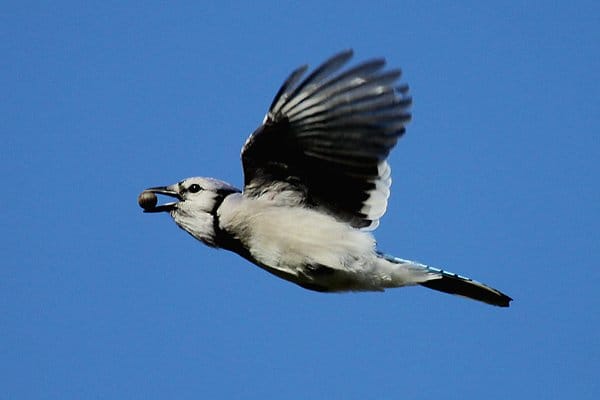 Blue Jay, photo by Corey Finger
Blue Jay, photo by Corey Finger
But I get way ahead of myself. Let’s review what jays are first.
Jays are medium-sized passerines of the in the family Corvidae, a family with worldwide distribution which consists not only of the birds we’re highlighting here, but also ravens, crows, magpies, treepies and nutcrackers. The name “jay” is more or a semantic distinction rather than a taxonomic one, as it’s usually applied to those smaller Corvids with shorter tails. This can get a bit confusing, particularly as the Pica magpies (Eurasian, Black-billed, and Yellow-billed) are more closer genetically to the Eurasian jays than the American ones. The other birds called magpies (a name generally applied to medium-sized Corvids with long tails) aren’t really very closely related to any of them. And the less said about the magpie-jays the better. Clearly there were several directions to go with this, but to make it easy we’ll just say a jay is a jay is a jay.
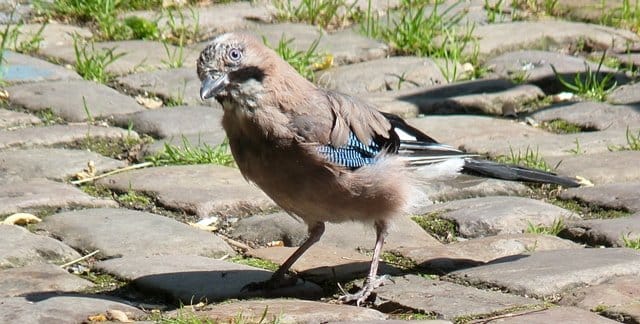 Eurasian Jay, photo by Scott Winton
Eurasian Jay, photo by Scott Winton
Jays themselves can be broken into two groups, with a third group sort of grafted onto the side. The Old World, or “brown” jays (not to be confused with the neotropic Brown Jay, naturally), consist of those in the genus Garrulus, the most famous of which is the Eurasian Jay, the Ground Jays of central Asia, and the bizarre Piapiac of tropical Africa. But aprt from the Japanese Lidth’s Jay, those birds pale in comparison to the New World, or “blue” jays (which does include the Blue Jay as well as the Brown Jay). This is where jay diversity peaks, North and South America contain almost all of the crested and non-crested species with which birders in North America are very familiar like Steller’s Jay, the western counterpart to the east’s familiar Blue Jay, and the three Scrub Jay species, in addition to some spectacular species from the Neotropics.
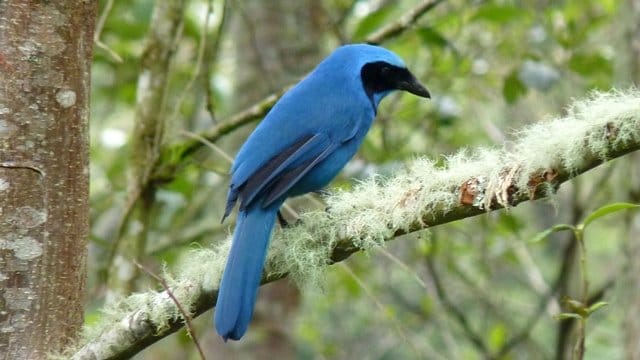
Turquoise Jay, photo by Scott Winton
That third group of jays consists of the fascinating Gray Jay of boreal North America, its Old World counterpart, the Siberian Jay, and China’s endemic Sichuan Jay. All three are coniferous forest obligates, the first two across the high latitudes in the north and the last stuck in the highest mountains of Tibet. They’re known for their habit of caching food constantly, turning into sticky salivary balls called bolus and packing them wherever they can find them.
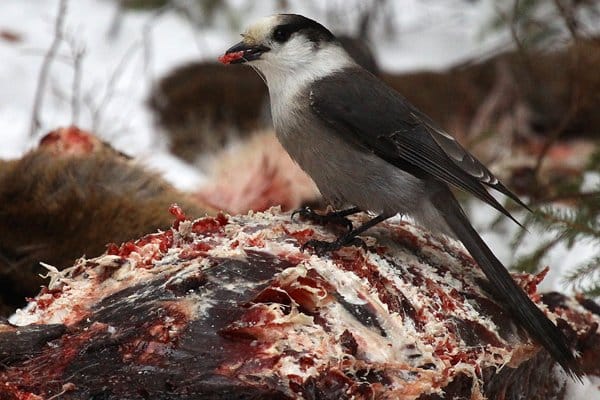
Gray Jay, photo by Corey Finger
While not all jays are quite as obsessive in their caching as the three gray jays, the behavior is fairly common among the entire family, particularly those that live in temperate climates. The ability to remember the locations of hundreds if not thousands of food caches requires an intelligence and memory that is uncommon in birds. Maybe that’s part of the reason we find jays so intriguing, because we can see so much of ourselves in them.
Scrub jays, in particular, are well-known for their close knit family groups. Pairs of scrub jays often have “helpers”, generally fledglings from previous years that stick around and help raise the current year’s chicks. And not only that, but scrub jays have been observed to even appear to mourn the passing of birds in their groups upon their deaths, a behavior thought only to be exhibited in primates. Truly amazing stuff!
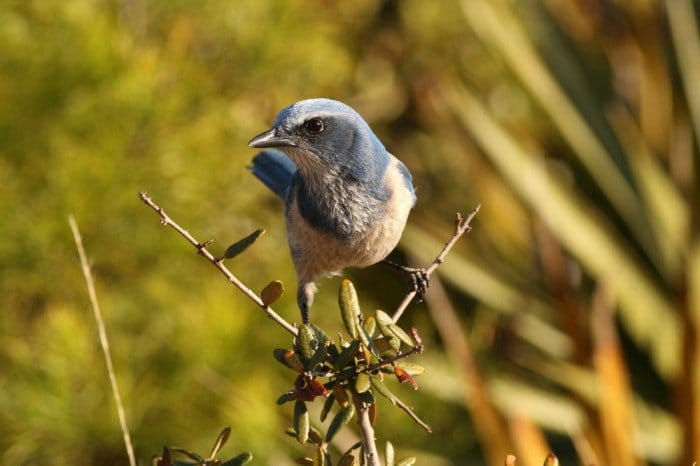
Florida Scrub Jay, photo by Anna Fasoli
Scrub jays are notable among New World jays for their diversity too, as for years the species was thought to range widely across the western past of the continent except for two outlying populations in Florida and on Santa Cruz Island in California. Those populations have since been granted full species status (granting Florida and California with their own endemic bird species too). In fact, the taxonomy of several species of jays is in flux, which serves as a reminder of the diversity that exists right beneath our noses in a group of birds that seems so well-known and well-loved.
But that’s jays, they will certainly never lose their capacity to surprise us!
–=====–
Blue Jay, Cyanocitta cristata
- Red-tailed Hawk Attacked by Blue Jay – Mike Motta, Iowa Voice
- Charlie Jay – Pam Johnson-Bicknell, South Carolina Low Country Nature and Art
- What does an Oak Tree sound like? – Rebecca Deatsmen, Rebecca in the Woods
- 365 Day Later Ol’ Blue is stealing… – Kelly Riccetti, Red and the Peanut
- Blue Jays Carrying Acorns – Corey Finger, 10,000 Birds
- Presto, A Fledgling Blue Jay – Suzie Gilbert, 10,000 Birds
- Blue Jay Way – Corey Finger, 10,000 Birds
- Bald Heads reveal Dinosaur Ancestry – Hilke Breder, Birding is Fun
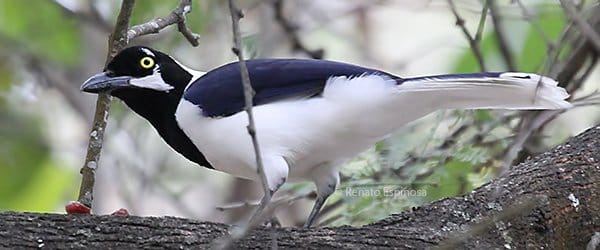 White-tailed Jay, photo by Renato Espinosa
White-tailed Jay, photo by Renato Espinosa
Steller’s Jay, Cyanocitta stelleri
- Steller’s Jay – Redgannet, 10,000 Birds
- Steller’s Jay, Mysteries of the Common Birds – Carrie Laben, 10,000 Birds
- Again Alux – Mike Bergin, 10,000 Birds
- Steller’s Jay – Liza Lee Miller
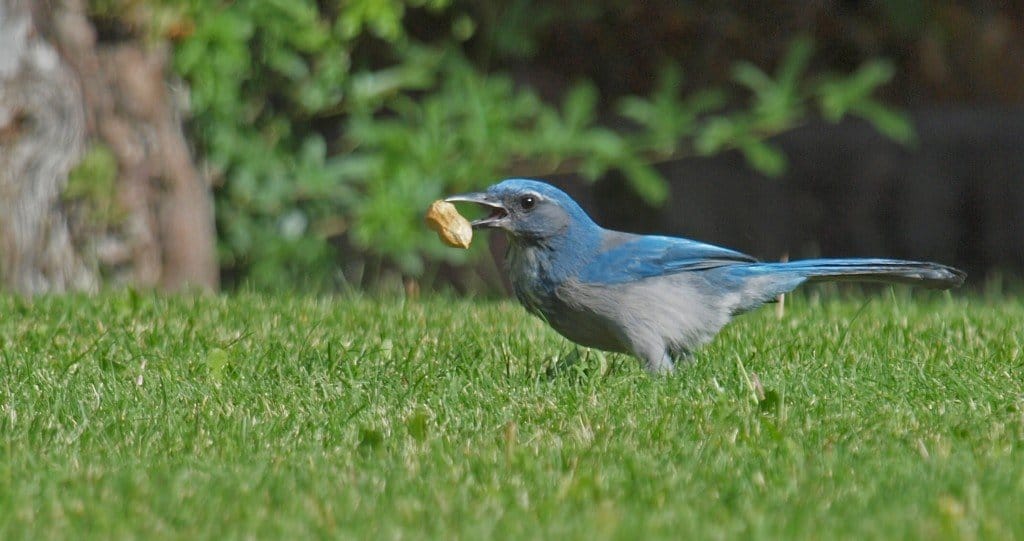 Western Scrub Jay, photo by Robert Mortensen
Western Scrub Jay, photo by Robert Mortensen
Western Scrub Jay, Aphelocoma californica
- Western Scrub Jays Bring their young to the pond – Larry Jordan, The Birder’s Report
- What do animals think of their dead? – Sarah Jane Alger, The Scorpion and the Frog
- Western Scrub Jay: A Bright Corvid in Many Respects – Larry Jordan, 10,000 Birds
Florida Scrub Jay, Aphelocoma coerulescens
- Scrub Jays at Iyonia Preserve – Amy Evenstad, Powered By Birds
- Do you have the support of a Scrub Jay sibling? – Gail Morris, God Girl Gail
- A Few Scrub Jays at Juniper Prairie Wilderness Area – Alex Lamoreaux, The Nemesis Bird
- Jay Watch 2012 – Anna Fasoli, The Nemesis Bird
- Nuts for Peanuts – Anna Fasoli, The Nemesis Bird
- Florida Scrub Jays at Merritt Island National Wildlife Refuge – Corey Finger, 10,000 Birds
- Florida Scrub Jay: A US Endemic – Mike Bergin, 10,000 Birds
- Florida’s Scrubland Dwellers – Tammy Karr, Birding is Fun
Island Scrub Jay, Aphelocoma insularis
- Searching for Island Scrub Jays on Santa Cruz Island – Corey Finger, 10,000 Birds
Green Jay, Cyanocorax yncas
- Why is the Inca Jay not a Green Jay? – Corey Finger, 10,000 Birds
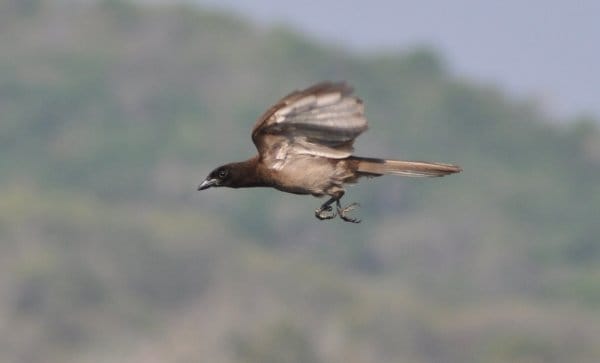
Brown Jay, photo by Steven Tucker
Gray Jay, Perisoreus canadensis
- Gray Jay, Perisoreus canadensis – Corey Finger, 10,000 Birds
Eurasian Jay, Garrulus glandarius
- Flemish Jay -Peter Thoem, My Bird of the Day
Lidth’s Jay, Garrulus lidthi
- My Favorite Bird: The Amani Jay (AKA Lidth’s Jay) – Travis Juntara, Traversion Comlog









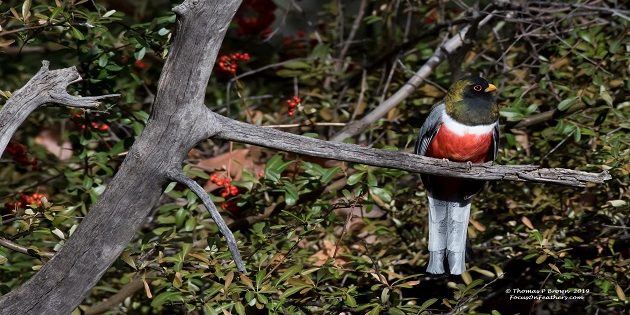




Leave a Comment